Oceanography

For decades, doctors have developed methods to diagnose how different types of cells and systems in the body are functioning. Now scientists have adapted biomedical techniques to study the vast body of the ocean.
In a Science paper, scientists demonstrate that they can identify and measure proteins in the ocean, revealing how single-celled marine organisms and ocean ecosystems operate.
"Proteins are the molecules that catalyze the biochemical reactions happening in organisms," says Woods Hole Oceanographic Institution (WHOI) biogeochemist Mak Saito, the paper's lead author. "Instead of just…

One of the common misconceptions about climate, brought about by the blight of 'framing' that afflicted science media in the last decade, is that the amount of carbon dioxide in the atmosphere, solar radiation and temperature follow each other – the more solar radiation and the more carbon dioxide, the hotter the temperature.
Climate experts always knew better but let the analogies go in hopes that it would get policy action done regarding too much CO2, but too much simplification has done more harm than good, and now more people than ever assume science is just another extension of…
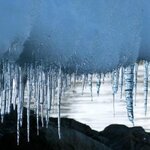
A new analysis of satellite data from the last 19 years reveals that fresh water from melting glaciers has caused the sea level around the coast of Antarctica to rise by 2 centimeters more than the global average of 6 centimeters.
Researchers at the University of Southampton detected the rapid rise in sea-level by studying satellite scans of a region that spans more than a million square kilometers.
The melting of the Antarctic ice sheet and the thinning of floating ice shelves has contributed an excess of around 350 giga-tons of freshwater to the surrounding ocean, they say, and this…
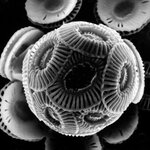
Some species of marine phytoplankton, such as the prolific bloomer Emiliania huxleyi, can grow without consuming vitamin B1 (thiamine), which contradicts the common view that E. huxleyi and many other eukaryotic microbes depend on scarce supplies of thiamine in the ocean to survive.
All living creatures need thiamine to live, as well as other vitamins. Organisms may produce some of their own vitamins, the way that human cells create vitamin D with help from sunlight, but sometimes they rely on other organisms to produce the vitamins they need and then consume them. For example, oranges and…
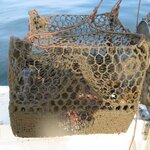
Thousands of fishing traps are lost each year in U.S. waters. These derelict traps continue "ghost fishing" and catch fish, crabs, and other species such as turtles, which results in losses to habitat, fisheries, and the watermen who depend on the resources - losses that are largely preventable, according to a new NOAA paper in the Marine Pollution Bulletin.
The paper looks at the results of seven NOAA-funded studies in different fisheries across the U.S., and compares the severity of the problem, and common management challenges across the regions. It also reports certain findings from…
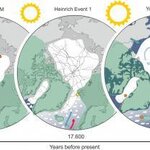
Researchers have succeeded in reconstructing the sea ice conditions in the Fram Strait for this critical period at the end of the last glacial and thus in finding a direct connection between changes in sea ice cover and fluctuations in the Gulf Stream.
A nine meter long sediment core served as a window into the past for the geologists. It was drilled on a Fram Strait expedition conducted on the research vessel Maria. S. Merian and has such clearly defined layers that the scientists can read it like a book.
Two kinds of fossil molecules, also designated as biomarkers, served as…
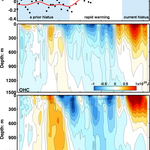
Though the end of the 20th century looked like we were going to see runaway temperatures around the globe, that hasn't really happened despite countries like China and Russia and Mexico and India continuing to belch CO2 into the atmosphere.
More than a dozen hypotheses have been proposed for the so-called global warming hiatus, ranging from air pollution to volcanoes to sunspots and now the University of Washington has entered the fray, saying that the heat absent from the surface is plunging deep in the north and south Atlantic Ocean, and is part of a naturally occurring cycle. …
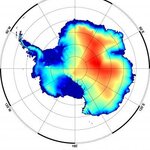
For the first time, scientists have mapped elevation changes of Greenlandic and Antarctic glaciers.
For the new digital maps, the researchers evaluated all data by the CryoSat-2 altimeter SIRAL. Satellite altimeter measure the height of an ice sheet by sending radar or laser pulses in the direction of the earth. These signals are then reflected by the surface of the glaciers or the surrounding waters and are subsequently retrieved by the satellite. This way the scientists were able to precisely determine the elevation of single glaciers and to develop detailed maps.
On the basis of…

During the last ice age, a large part of North America was covered with a massive ice sheet up to 3 kilometers thick and that is a key reason why the sea level was then about 120 meters lower than it is today.
During the cold stadial periods of the last ice age, massive ice sheets covered northern parts of North America and Europe. Strong westerly winds drove the Arctic sea ice southward, even as far as the French coast. Since the extended ice cover over the North Atlantic prevented the exchange of heat between the atmosphere and the ocean, the strong driving forces for the ocean…
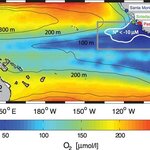
By Raquel Vaquer-Sunyer, Lund University
The world’s oceans are plagued with the problem of “dead zones”, areas of high nutrients (such as nitrogen and phosphorus) in which plankton blooms cause a major reduction of oxygen levels in the water. Sea creatures need oxygen to breathe just as we do, and if oxygen levels fall low enough marine animals can suffocate. This commonly happens around coastlines where fertilisers are washed from fields into rivers and the sea, but also mid-ocean, where currents trap waters in gyres (large systems of rotating ocean currents).
To date most studies have…